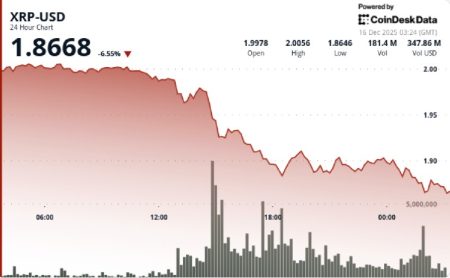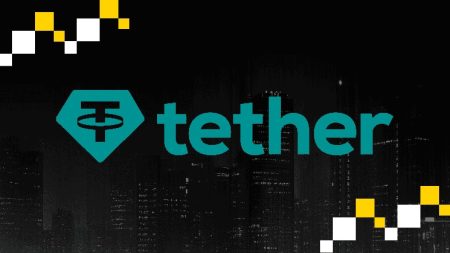Crypto’s True Significance: Beyond Web 3.0 to Capitalism 2.0
Redefining Crypto’s Impact: More Than Just a Digital Evolution
In the rapidly evolving landscape of digital finance, the common characterization of cryptocurrency as “Web 3.0” significantly underestimates its revolutionary potential, according to industry leaders. Mert Mumtaz, CEO of Helius, a prominent remote procedure call (RPC) node provider, argues that cryptocurrency represents something far more transformative than simply the next iteration of the internet. Instead, Mumtaz positions crypto as the catalyst for a comprehensive reformation of our economic systems – effectively creating “Capitalism 2.0.”
“We’ve been limiting our understanding by labeling crypto as Web 3.0,” Mumtaz explained in a recent interview. “This framing fundamentally undermines what’s actually happening – cryptocurrency is revolutionizing the most impactful human invention of all time: capitalism itself.” According to Mumtaz, cryptocurrency strengthens and enhances the essential components that allow capitalism to function optimally. These include decentralized information flow, immutable property rights, aligned incentives among participants, unprecedented transparency, and capital movement without traditional barriers. By supercharging these elements, cryptocurrency isn’t merely adding a layer to the internet – it’s reengineering the economic foundation upon which modern society operates.
The implications of this perspective extend far beyond technical innovation. While the digital asset ecosystem continues to mature technologically, its most profound impact may be in transforming how economic value is created, exchanged, and managed across global systems. This represents a paradigm shift comparable to the original development of capitalist frameworks, but with 21st-century technology enabling features that were previously impossible to implement at scale.
Regulatory Signals Point to Integration of 24/7 Financial Markets
Recent developments in the regulatory landscape suggest that traditional financial authorities are beginning to acknowledge cryptocurrency’s transformative potential. In September, two of America’s primary financial regulatory bodies – the Securities and Exchange Commission (SEC) and the Commodity Futures Trading Commission (CFTC) – released a joint statement that hints at a monumental shift in how capital markets might operate in the near future. The agencies outlined the possibility of establishing 24/7 capital markets in the United States, marking what would be a revolutionary departure from conventional financial operations.
The current legacy financial system operates within strict time constraints – markets close overnight, shut down completely on weekends, and observe numerous holidays. These limitations, deeply embedded in traditional finance, stand in stark contrast to the continuous operation of cryptocurrency markets, which function without interruption. The joint SEC-CFTC statement specifically highlighted this disparity, noting: “Certain markets, including foreign exchange, gold, and crypto assets, already trade continuously. Further expanding trading hours could better align US markets with the evolving reality of a global, always-on economy.”
This regulatory acknowledgment represents more than just an operational adjustment; it signals a fundamental recognition that financial systems must evolve to match the 24/7 nature of the modern, interconnected global economy. The proposal extends beyond just extended hours to include regulatory frameworks for perpetual futures contracts (which have no expiration date) and event prediction markets – both concepts that have been pioneered and refined within the cryptocurrency ecosystem before being considered for traditional finance.
Tokenization: Building Bridges Between Traditional and Digital Finance
The convergence between traditional financial infrastructure and digital asset innovation is accelerating through tokenization – the process of representing real-world assets on blockchain networks. This technological bridge enables conventional financial instruments to leverage the efficiency, transparency, and accessibility inherent to blockchain systems while maintaining their fundamental economic characteristics.
The scope of tokenization extends across virtually all asset classes. Financial institutions are actively exploring or implementing tokenized versions of stocks, bonds, fiat currencies (in the form of stablecoins), private credit arrangements, real estate holdings, art collections, and other collectibles. This widespread application demonstrates that tokenization isn’t merely a niche technological experiment but rather a comprehensive methodology for modernizing financial infrastructure.
Market analysis from RWA.XYZ illustrates the remarkable growth in the tokenized real-world asset sector, with stablecoins representing a particularly successful implementation of this concept. These digital representations of fiat currencies have achieved significant adoption, with billions of dollars in market capitalization and daily transaction volumes that rival many traditional payment networks. Their success provides a blueprint for how other tokenized assets might achieve mainstream integration.
Institutional Roadmaps for Internet Capital Markets
Major institutional players are developing formal strategies to accelerate the transition toward internet-native capital markets. In July, the Solana Foundation – the organization overseeing the development of the high-performance Solana blockchain network – unveiled an ambitious roadmap for developing internet capital markets through 2027. This strategic plan outlines how blockchain infrastructure can evolve to support sophisticated financial operations at global scale with the reliability, compliance features, and performance necessary for institutional adoption.
The Solana Foundation’s initiative doesn’t exist in isolation. It emerges amid a wave of announcements from both blockchain-native companies and established financial institutions regarding tokenized products. Among the most notable developments was Robinhood’s introduction of tokenized stock trading for European users in July. This move by a platform that already straddles the boundary between traditional and modern finance represents a significant step toward mainstream acceptance of tokenized securities.
These institutional roadmaps highlight an important reality: the evolution toward internet capital markets isn’t being driven solely by cryptocurrency enthusiasts or blockchain startups. Rather, it represents a broader recognition across the financial sector that tokenization offers substantial benefits in terms of operational efficiency, market accessibility, and capital formation. The participation of regulated entities like Robinhood also helps address persistent questions about regulatory compliance in tokenized markets.
Challenges and Questions on the Path to Financial Transformation
Despite the promising developments, significant questions remain about how truly decentralized these new financial instruments can become. When established centralized entities like Robinhood or crypto exchange Kraken offer tokenized stocks, they necessarily maintain certain centralized control mechanisms. This creates a tension between the decentralization ethos that underpins much of cryptocurrency philosophy and the practical realities of operating within existing regulatory frameworks.
The path toward Capitalism 2.0 also faces substantial challenges regarding regulatory certainty, technological scalability, security considerations, and user experience. While the joint SEC-CFTC statement signals potential openness to innovation, the detailed regulatory frameworks necessary for widespread institutional adoption remain under development. Similarly, blockchain networks continue to address technical challenges related to transaction throughput, interoperability between systems, and protection against sophisticated attacks.
Perhaps most fundamentally, the evolution toward internet capital markets requires shifting deeply ingrained financial behaviors and expectations. Consumers, investors, and institutions have decades of experience with traditional financial systems – changing these established patterns requires not just technological solutions but also comprehensive education and gradual cultural adaptation. The companies and organizations leading this transformation must therefore balance revolutionary innovation with practical considerations about how real users interact with financial systems.
As the financial world gradually embraces aspects of cryptocurrency infrastructure, Mumtaz’s characterization of the movement as “Capitalism 2.0” provides a useful framework for understanding what’s at stake. Rather than viewing crypto as merely a technological development, this perspective recognizes it as a fundamental reimagining of economic interaction – one that preserves capitalism’s core strengths while addressing its historical limitations through decentralization, transparency, and continuous operation. Whether this vision will fully materialize remains uncertain, but the trajectory suggests that traditional finance and cryptocurrency innovation are increasingly converging toward a shared future.















